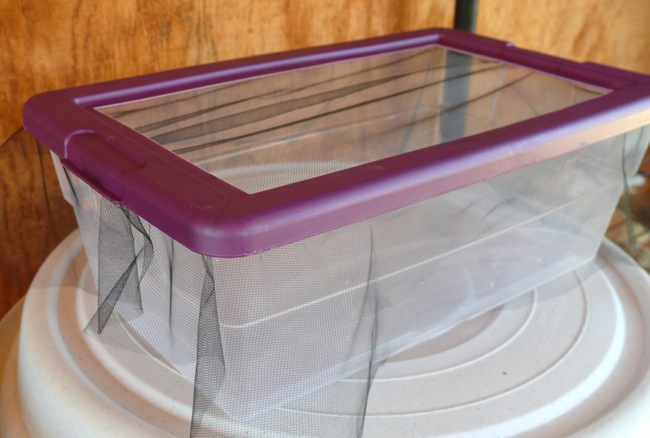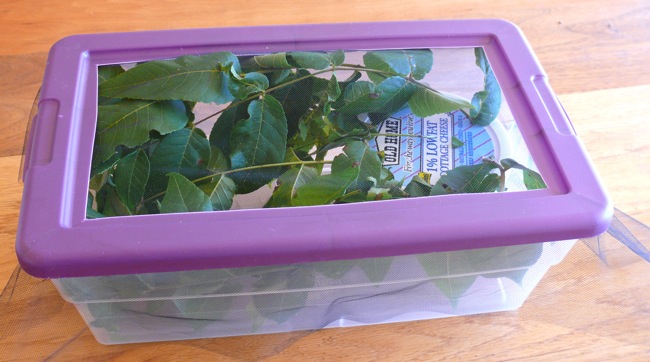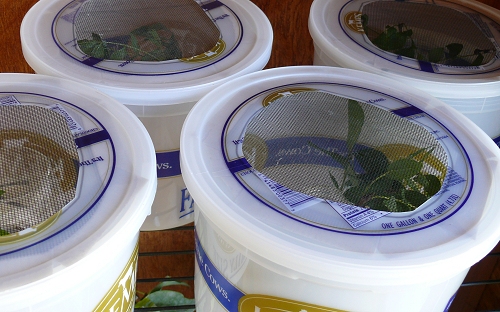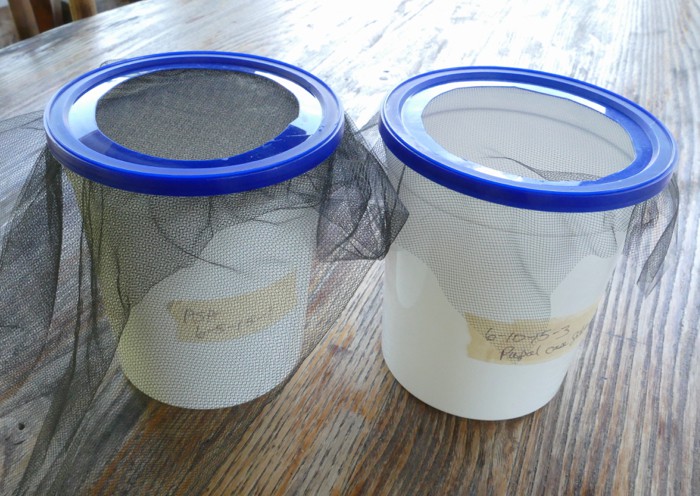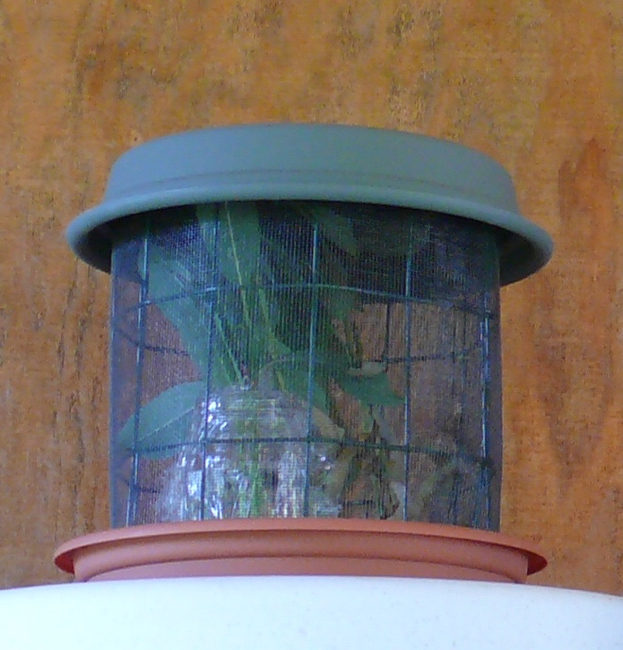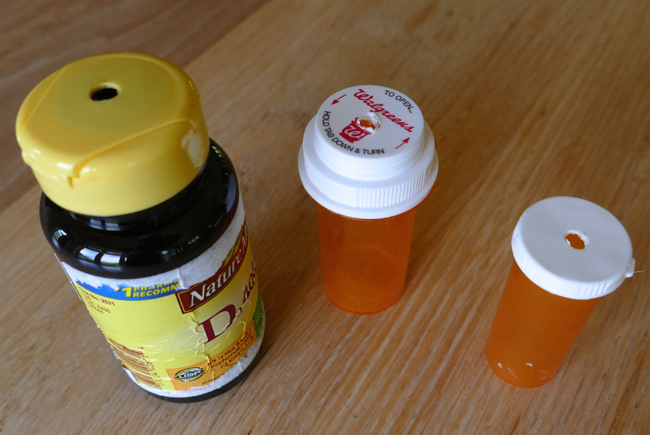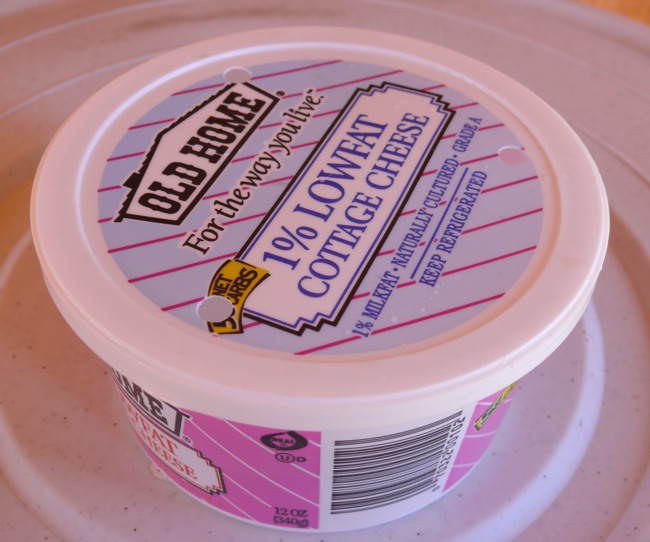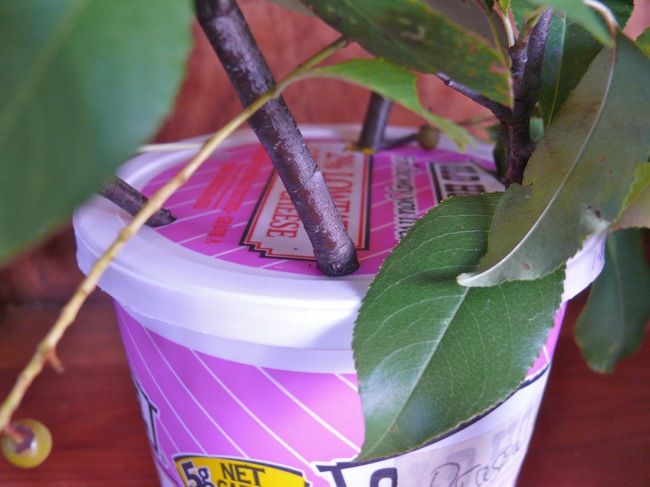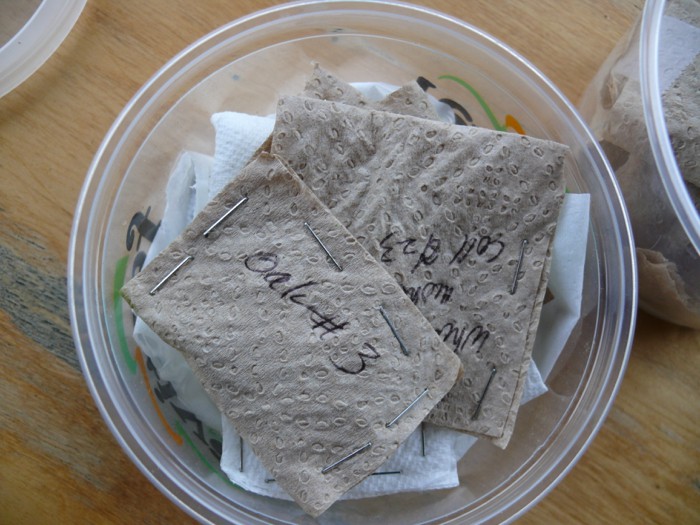Rearing caterpillars is a great way to learn about moths and butterflies. On this page I’ll show my techniques for rearing, and the equipment I use.
Here is an older version of this page, with examples of butterflies that I’ve successfully reared.
(Bugguide has a great page about raising caterpillars, including an excellent explanation of the life cycle of moths and butterflies.)
Most caterpillars will turn out to be moths – just because there are so many more moths than butterflies. There are about 825 species of butterflies in North America, and at least 12,000 species of moths.
Finding Caterpillars
There are two ways I find caterpillars – on a plant, or wandering in some other place – not on a plant. Caterpillars are often very particular about their food – so if I’m going to feed them, I need to figure out what they eat.
If I find the caterpillar on a plant, that’s usually its host plant – the plant it eats. (Sometimes, if it’s in the woods, it has fallen from a tree, and it’s not actually eating the plant it’s on. If that happens, I give it a choice of several different tree leaves. ) If it’s wandering, it may be looking for a place to pupate, or if it’s late summer or fall, a sheltered place to hibernate.
Feeding a Caterpillar
I put the caterpillar and some of the host plant into a container that I can keep clean, and watch what’s happening. And I make sure I can get more host plant when I need to.
If I’m not sure of the host plant, I put in some sprigs of common nearby plants (including at least one grass, and a few broad leafed plants). I watch to see what it actually eats, so I know what to continue feeding it.
I check on the caterpillar frequently, and clean out any frass (droppings).
Cages
Here are some examples of cages I use for caterpillars.
This one is a plastic box with the center cut out of the lid. I drape gauzy fabric over it, and snap the lid edge on over the fabric.
Here’s the cage with a host plant and caterpillar inside.
Similar cages – using old ice cream buckets and plastic screening. The screening is taped over a hole cut in the lid.
Plastic food containers, with holes cut in the top, and the remaining ring snapped over gauze fabric.
Or a screen and wire cage with plastic saucers for the top and bottom.
Younger caterpillars need more humidity than older caterpillars, so they don’t dry out. I often keep them in closed containers, or even plastic bags. As they get larger, they seem to need more air circulation so they don’t get sick.
It’s important to keep the plant material fresh, but caterpillars will drown in open water. Here are some examples of water containers that work well to keep caterpillars out. I use different ones depending on the size of the cage, and the amount of plant material I need to provide. I have to be sure the plant stems fill the holes or the caterpillars may find their way down into the water.
I drill holes in these lids.
I use a paper punch to make these holes
Water container with plants
Pupating
Caterpillars often change color – sometimes to a pink or red color – stop eating, and start to wander when they’re ready to pupate. When I think this is happening, I put wood chips, a piece of rotten wood, and some sphagnum moss into the cage. Some caterpillars will only pupate if the right substrate is available.
While it’s pupating, I leave it alone – sometimes even moving the cage prevents it from completing the process.
Once it pupates, I clean out the cage of everything except the pupa, and a way for the adult to climb once it emerges – it will need to climb up and hang its wings to dry. I usually put in a stick, leaning against the side, and I cover the glass or plastic sides of the container with paper towel so they’re not slippery. Sometimes I use a new, smaller cage – like a glass jar – as long as I’m sure there’s enough space for the newly emerged adult to spread its wings.
If it’s early in the summer, and if the moth has more than one generation per year, the adult may emerge a few weeks after pupating.
Overwintering
If it’s later in the summer or fall, the caterpillar or the pupa may overwinter. Once winter really arrives, the pupa needs a place to stay until the next spring. I’ve kept pupae successfully both in the refrigerator and in a clay flower pot buried in the ground. I’ve always overwintered caterpillars in a buried flowerpot.
Refrigerator overwintering:
I wrap each pupa, or several pupae of the same species, in a paper towel, label, and pack the packets gently into a plastic container with a tight lid.
I fold a piece of paper towel several times, drop 3 or 4 drops of water on it, put it on top of the pile of packets, and close the lid of the container. I refresh the drops of water every 6 weeks or so to prevent the pupae from drying out in our frost-free refrigerator. I remove the pupae when the weather starts to warm up – here in Wisconsin that’s usually at the end of March. I put each species of pupae in a separate jar, large enough for them to spread their wings when they emerge. I line the sides of the jar with paper towels, and lean a stick against the side to give the adults a place to climb and spread their wings. I try to check the cages every day until they emerge.
Many pupae need to be kept moist while they wait to emerge. I have a hard time with this – in an open jar they tend to dry out, especially if the humidity is low. A closed jar keeps them too wet, and they may get moldy. I’ve been most successful keeping them in a jar with a screen top, and trying to remember to squirt them with water every day or two.
Outside overwintering:
I cover the hole in the bottom of a clean clay flowerpot with a flat lid from a tin can. I put the pupae in the pot – in labeled paper towel packets if there are several kinds. I’ve kept caterpillars in these clay pots too. I usually give them a little potting soil to rest in or on. I cover the pot with a flat clay saucer and bury it up to the rim in the ground. I put a rock on top of the saucer to keep animals out.
I leave it in the ground until the snow goes away. Then I put the pupae in jars as described above. The caterpillars should be put in cages with some of their food plant.

